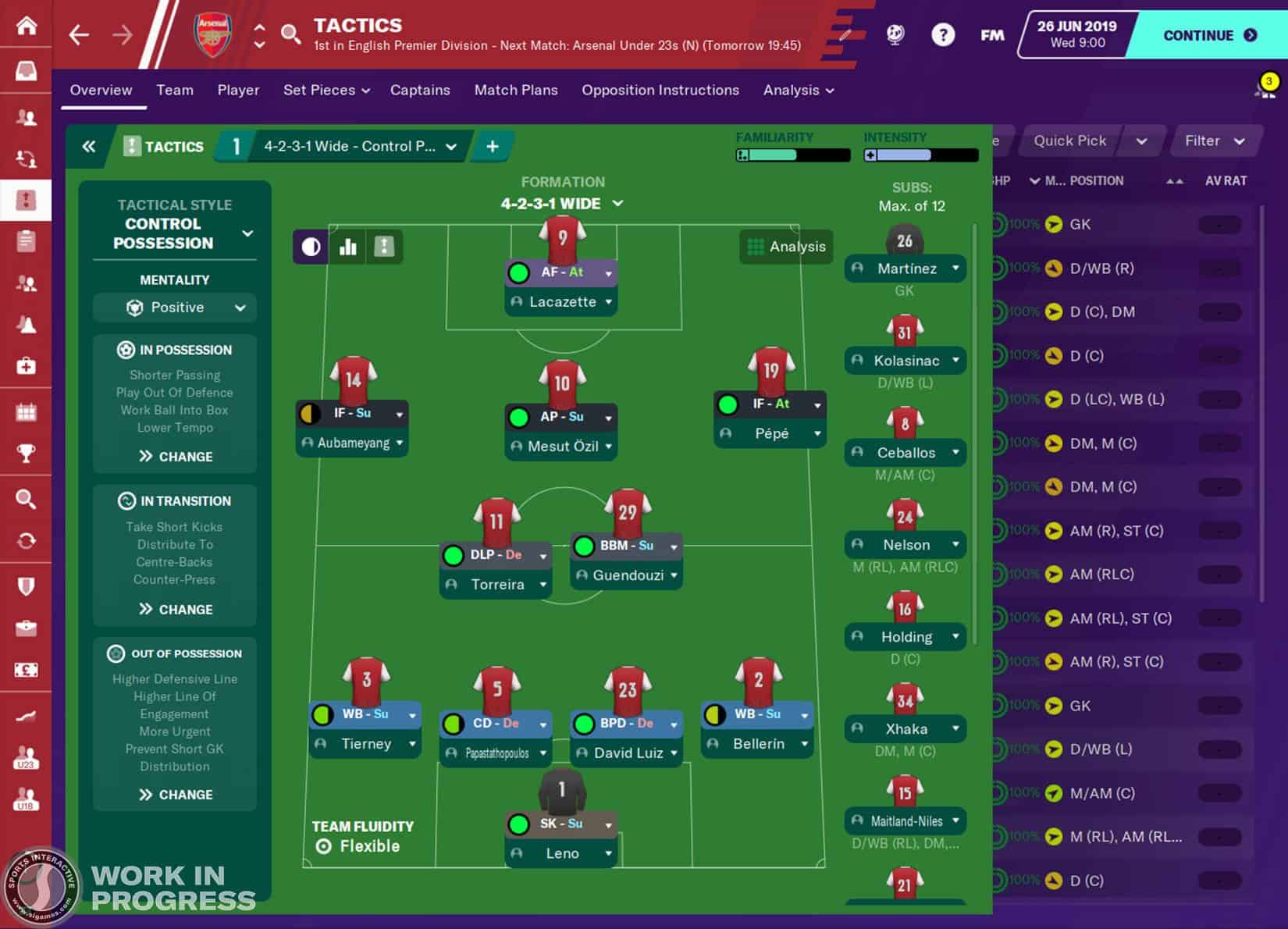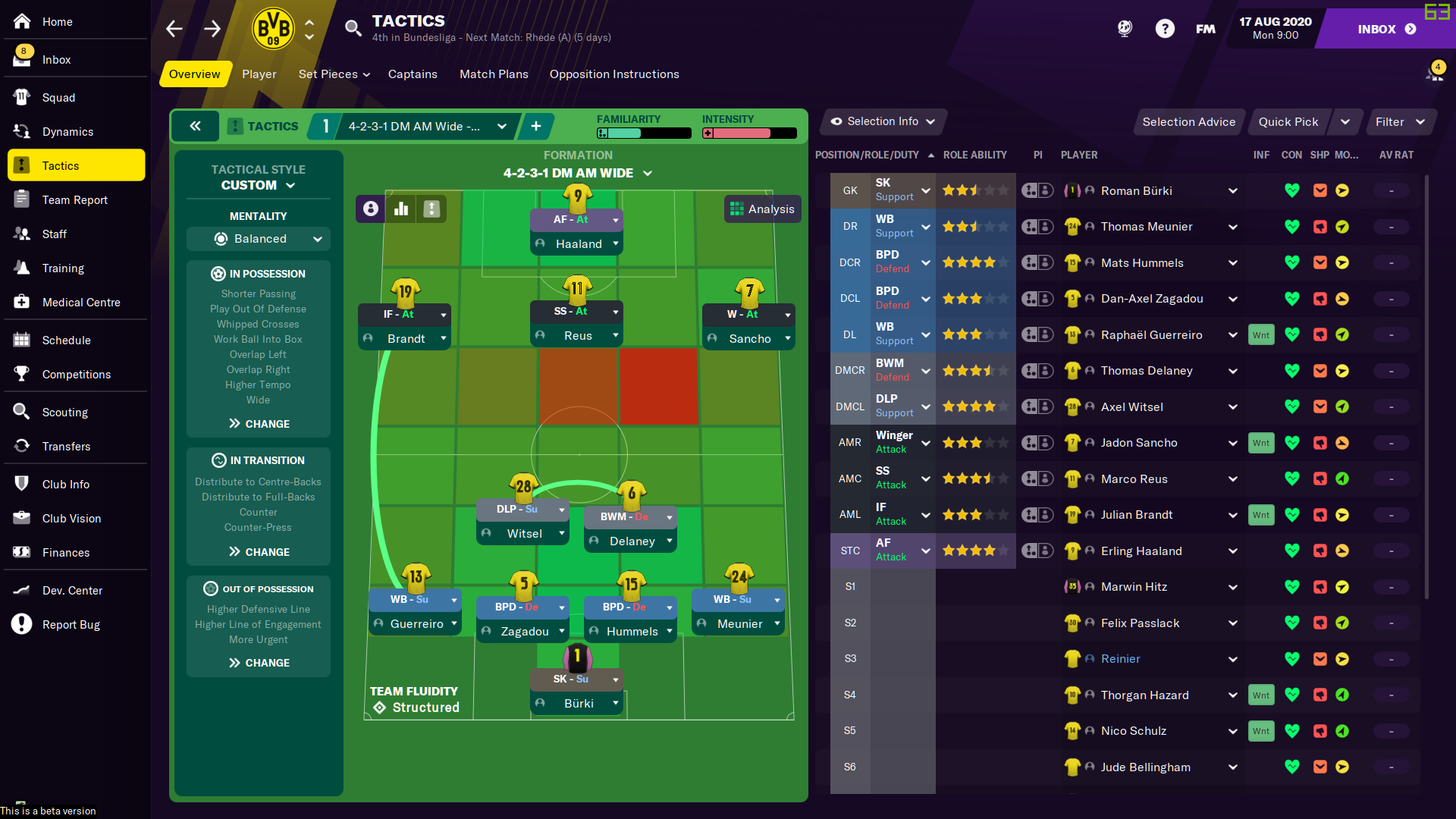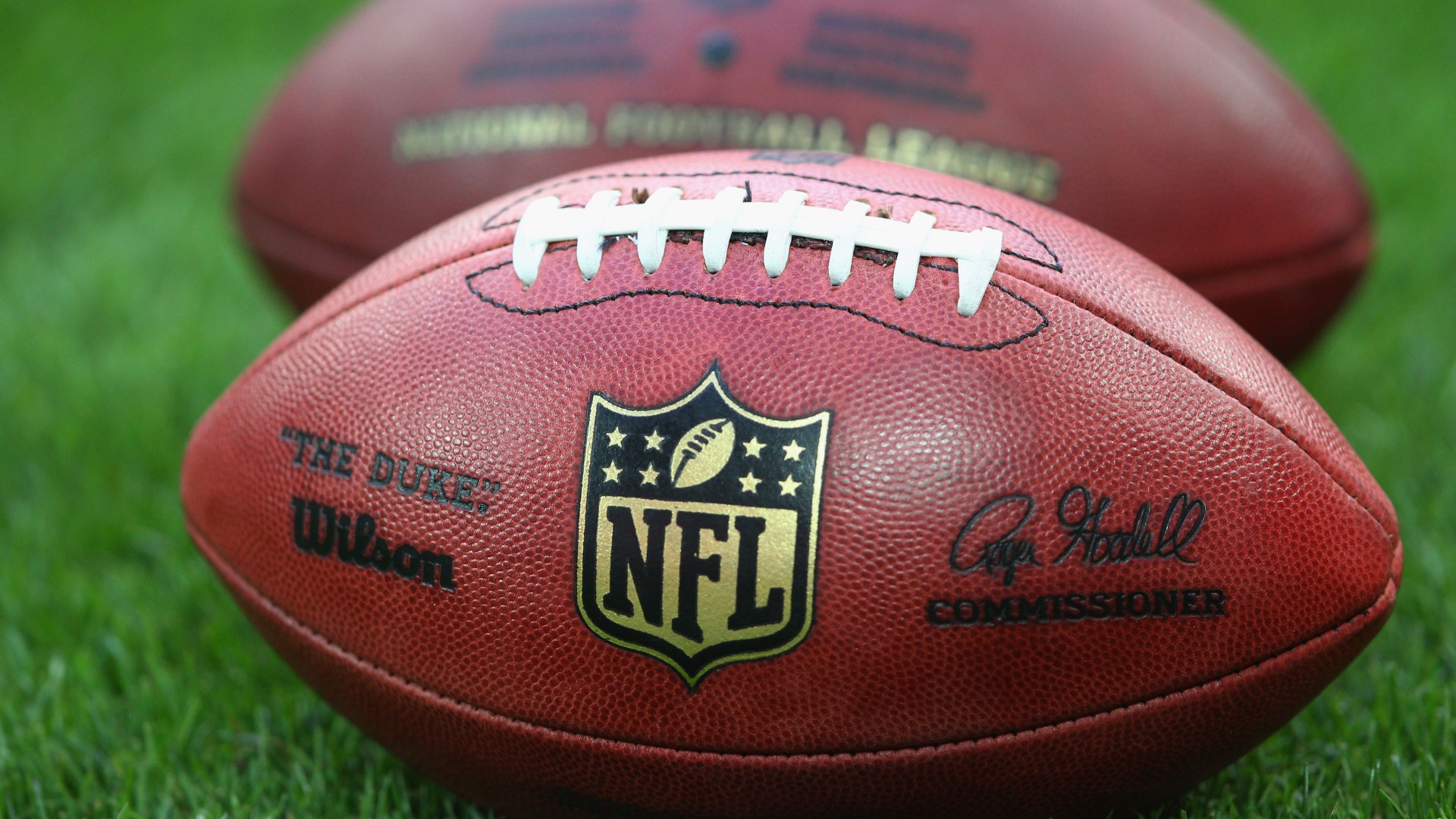Mastering the Modern Game: How to Craft Football Tactics for 2025
Football, often dubbed "the beautiful game," is a constantly evolving sport. What was tactically revolutionary a decade ago might be commonplace today, and by 2025, the landscape will have shifted even further. Crafting successful football tactics in this dynamic environment is no longer just about picking a formation; it’s a multi-faceted discipline encompassing data analytics, player psychology, fluid systems, and an unparalleled understanding of the game’s intricate phases. This article delves into the principles and methodologies required to design cutting-edge football tactics for the year 2025.
The Evolving Landscape of Football in 2025
Before diving into tactical creation, it’s crucial to understand the trends shaping football in 2025:
- Increased Pace & Physicality: The game is faster, more intense, and demands peak physical condition. Players are expected to cover more ground at higher intensities.
- Positional Fluidity & Hybrid Roles: Rigid positions are becoming obsolete. Players are increasingly multi-functional, capable of operating in several roles within a single match or even a single phase of play (e.g., inverted full-backs, false nines, central defenders who become holding midfielders in possession).
- Data-Driven Decisions: Analytics are no longer a luxury but a necessity. Performance metrics, opponent scouting, and even predictive modeling play a significant role.
- Emphasis on Transitions: The moments immediately after winning or losing possession are critical. Quick transitions from defense to attack and vice-versa are paramount.
- Personalized Player Development: Tactics must be designed not just for the collective, but also to maximize individual player strengths and mitigate weaknesses.
Foundational Pillars of Tactical Design
Any robust tactical framework for 2025 must be built upon several core pillars:
1. Defining Your Team Identity
Before drawing lines on a whiteboard, a coach must establish a clear philosophical identity. Do you want to be a possession-based team, a counter-attacking menace, a high-pressing unit, or a pragmatic low-block side? This identity should be aligned with the club’s culture, available resources, and the inherent strengths of your player pool. In 2025, "identity" often means a primary style with built-in flexibility. For example, a possession team might still have highly effective direct attacking options.
2. Balance Between Offense and Defense
The age-old dilemma. Modern tactics in 2025 demand an exquisite balance. A team must be capable of creating chances while simultaneously being defensively resilient. This isn’t about choosing one over the other, but integrating both seamlessly. This involves:
- Defensive Responsibility of Attackers: Forwards are the first line of defense in a high press.
- Attacking Contribution of Defenders: Full-backs and even center-backs are increasingly involved in build-up and creating overloads.
3. Flexibility and Adaptability
Rigid tactical plans are easily exploited. By 2025, top teams will possess multiple tactical layers, allowing them to:
- Adapt to Opponents: Change shape or approach based on the opposition’s strengths and weaknesses.
- Respond to Game State: Alter tactics when ahead, behind, or facing a red card.
- In-Game Adjustments: Coaches must be able to recognize patterns and make immediate, impactful changes.
4. Simplicity in Complexity
While tactics can be incredibly intricate, the instructions given to players must be clear, concise, and actionable. Overloading players with too much information leads to hesitation and errors. The best tactical designs in 2025 will have a few core principles that guide player actions in various situations, allowing for intuitive decision-making on the pitch.
Deconstructing the Game: Phases of Play in 2025
Modern tactics break the game down into distinct, yet interconnected, phases:
1. Build-Up Play (Attacking Phase 1)
This is how a team progresses the ball from their own defensive third into the midfield.
- Goal: Bypass the opponent’s first line of press and establish control.
- Tactical Considerations:
- Goalkeeper Involvement: The GK as a deep playmaker, comfortable on the ball.
- Center-Back Distribution: Ability to pass short through lines or hit accurate long balls.
- Midfield Support: Creating passing triangles, drawing opponents out, forming numerical superiority.
- Full-back Roles: Staying wide, tucking in (inverted), or pushing high.
- 2025 Trend: More sophisticated pressing traps from opponents demand faster, more decisive build-up, often using unconventional routes or player positioning.
2. Attacking Play (Attacking Phase 2 & 3)
Once the ball is in midfield, the focus shifts to chance creation.
- Goal: Penetrate the opponent’s defense and score.
- Tactical Considerations:
- Width and Depth: Utilizing the entire pitch to stretch the defense.
- Overloads: Creating numerical advantages in key areas (e.g., wide areas, central channels).
- Movement Off the Ball: Runs to create space, confuse defenders, and offer passing options (e.g., third-man runs, darting runs into the box).
- Combination Play: Quick passes, one-twos, overlaps.
- Individual Brilliance: Providing frameworks for creative players to express themselves.
- 2025 Trend: Increased focus on "half-spaces" (the channels between central and wide areas), dynamic rotations, and the unpredictability of fluid attacking shapes.
3. Defensive Play (Defensive Phase 1 & 2)
How a team regains possession and prevents goals.
- Goal: Limit opponent’s space, pressure the ball, and win it back.
- Tactical Considerations:
- Pressing Schemes: High press (gegenpressing), mid-block, low block.
- Defensive Shape and Compactness: Maintaining a narrow, disciplined structure to deny central penetration.
- Pressing Triggers: When and where to initiate the press (e.g., a poor touch, a backward pass, ball in a wide area).
- Individual Duels: Equipping players with the skills and confidence to win one-on-one battles.
- Set-Piece Defense: Detailed marking schemes and zonal responsibilities.
- 2025 Trend: Highly coordinated pressing units that act as one, often with specific players designated to "trap" the opponent, and sophisticated recovery runs to quickly regain shape.
4. Transitions (Attacking & Defensive)
The crucial moments when possession changes hands.
- Goal (Defensive Transition): React immediately after losing the ball to prevent a counter-attack (counter-pressing).
- Goal (Attacking Transition): React immediately after winning the ball to exploit opponent disorganization (counter-attacking).
- Tactical Considerations:
- Body Orientation: Players positioned to transition quickly.
- Immediate Pressure: Applying pressure on the ball carrier.
- Support Runs: Players quickly moving into space for a counter.
- Defensive Recovery Runs: Tracking back with urgency.
- 2025 Trend: Faster, more incisive transitions. The ability to switch between defending and attacking mindsets in milliseconds is a hallmark of elite teams.
The Player at the Core: Personalization in 2025
Tactics are only as good as the players executing them. In 2025, a truly effective tactical approach integrates deep understanding of each player:
- Individual Strengths & Weaknesses: Design roles that maximize what a player does well and minimize exposure to their limitations. A tactical system should be adaptable to the unique profile of a star player, not the other way around.
- Physical & Mental Capabilities: Understand player endurance, speed, recovery, and mental resilience.
- Hybrid Player Profiles: Develop players who can comfortably occupy multiple roles. This allows for greater tactical flexibility within a game.
- Communication & Buy-in: Players must understand their roles, the overall tactical plan, and believe in it. Open dialogue between coaches and players is vital.
Leveraging Data and Technology for Tactical Advantage
This is where "2025" truly comes into play. Data analytics and technology are indispensable tools for tactical creation and refinement:
- Performance Metrics: Beyond traditional stats, coaches analyze Expected Goals (xG), pressing intensity, progressive passes, defensive duels won, heat maps, passing networks, and more. This data provides objective insights into team and individual performance.
- Opponent Scouting: Advanced analytics identify opponent patterns, common passing routes, defensive vulnerabilities, pressing triggers, and set-piece routines. This informs specific game plans.
- AI and Machine Learning: Emerging AI tools can analyze vast datasets to identify subtle tactical trends, predict opponent movements, or even suggest optimal player combinations for specific situations. While not fully autonomous, AI will increasingly assist human tactical decision-making.
- Wearable Technology: GPS trackers and heart rate monitors provide real-time physical data, allowing coaches to manage player load, optimize training, and understand energy levels during a match.
- Video Analysis: Sophisticated software allows for detailed breakdown of every action, creating visual feedback loops for players and coaches. This is crucial for both pre-match preparation and post-match review.
The Human Element: Psychology and Leadership
Even with all the data and technology, football remains a human game.
- Motivation & Confidence: A coach’s ability to inspire, motivate, and instill confidence in their players is paramount. Tactics are executed by humans, not robots.
- Communication: Clear, concise, and consistent communication of tactical principles is vital. This includes pre-match talks, half-time adjustments, and ongoing feedback.
- Team Cohesion: Building trust, camaraderie, and a shared sense of purpose among the squad ensures that players work for each other, which is fundamental to executing complex tactics.
- Leadership: Identifying and nurturing on-field leaders who can interpret tactical instructions and guide their teammates is invaluable.
Bringing it to Life: Implementation and Refinement
Once a tactical framework is conceived, it must be implemented and continuously refined:
-
Training Ground Application:
- Drills: Design drills that specifically target tactical principles (e.g., small-sided games to practice pressing triggers, possession drills with specific passing patterns).
- Set-Piece Practice: Rehearsing offensive and defensive set-piece routines.
- Tactical Walk-Throughs: Using cones and slow-motion movements to explain positioning and transitions.
- Video Sessions: Reviewing game footage to highlight successful execution and areas for improvement.
-
Pre-Match Preparation:
- Opponent Analysis: Presenting key opponent strengths, weaknesses, and tactical patterns to the team.
- Game Plan Communication: Clearly outlining the match-specific tactical approach.
-
Match Day Management:
- Observation: The coaching staff must constantly analyze the flow of the game, looking for patterns, imbalances, and opportunities.
- In-Game Adjustments: Making substitutions, changing formations, or altering instructions based on the game state.
- Half-Time Talks: Re-emphasizing key points, making necessary adjustments, and re-motivating players.
-
Post-Match Analysis:
- Review: Detailed analysis of performance using data and video.
- Feedback: Providing constructive feedback to players and the team as a whole.
- Learning: Identifying what worked, what didn’t, and why, to inform future tactical evolution.
Conclusion
Crafting football tactics for 2025 is an intricate art and science. It requires a deep philosophical understanding of the game, a meticulous breakdown of its phases, a player-centric approach, and a cutting-edge embrace of data and technology. Yet, at its heart, it remains a human endeavor, demanding exceptional leadership, communication, and the ability to inspire a collective to perform as one. The most successful tactical minds of 2025 will be those who can seamlessly blend analytical rigor with intuitive understanding, creating fluid, adaptive, and exciting football that captivates fans and conquers opponents. The game will continue to evolve, and so too must the tactics that define it.




